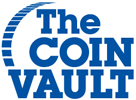The realities of war and the destruction of a government created this next entry in our blog series covering Whitman Publishing’s 100 Greatest Modern World Coins Series. Authors Charles Morgan and Hubert Walker take us through what exactly happened to make this coin a contender on the list.
#94 - South Vietnam 1975 50 Ðồng
South Vietnam was one of the many countries involved in the Food and Agriculture Organization program that was launched in the late 1960s. Engaged in the World Money Programme endeavor, it was a program “centered around raising money for and awareness of food insecurity in the developing world.” Multiple countries were involved in creating commemorative coins in all different finishes, varieties, and individual issues in addition to gold, silver, bronze, gilded bronze, and aluminum medals. All these numismatic items were not intended for circulation and the FAO was aggressive in their marketing as such.
While working with the United Nations for this program, the 1975 50 Ðồng was lined up to be the country’s fourth issue in the FAO series. The first three issues, including a 1 Ðồng, 10 Ðồng, and 20 Ðồng, were struck from 1968 through 1974 through several different producers. This included the German State Mint at Hamburg, which was a private German Mint, and the United Kingdom Royal Mint. In a contract with the Royal Mint, South Vietnam ordered the production of 50 million pieces of the nickel-clad steel 1975 50 Ðồng. Over one million coins were minted before the Spring Offensive by North Vietnam forces would overrun the South’s defense, leading to the fall of Saigon and the South Vietnamese government.
The Royal Mint would cease further production after realizing they would never be issued and disposed of those that had already been struck. Almost the entire mintage was melted except for the approximate few dozen examples that are known to exist today. Those survivors were likely taken by workers during the melt, according to South Asian coin experts. The coins that did make it out are in poor condition.
